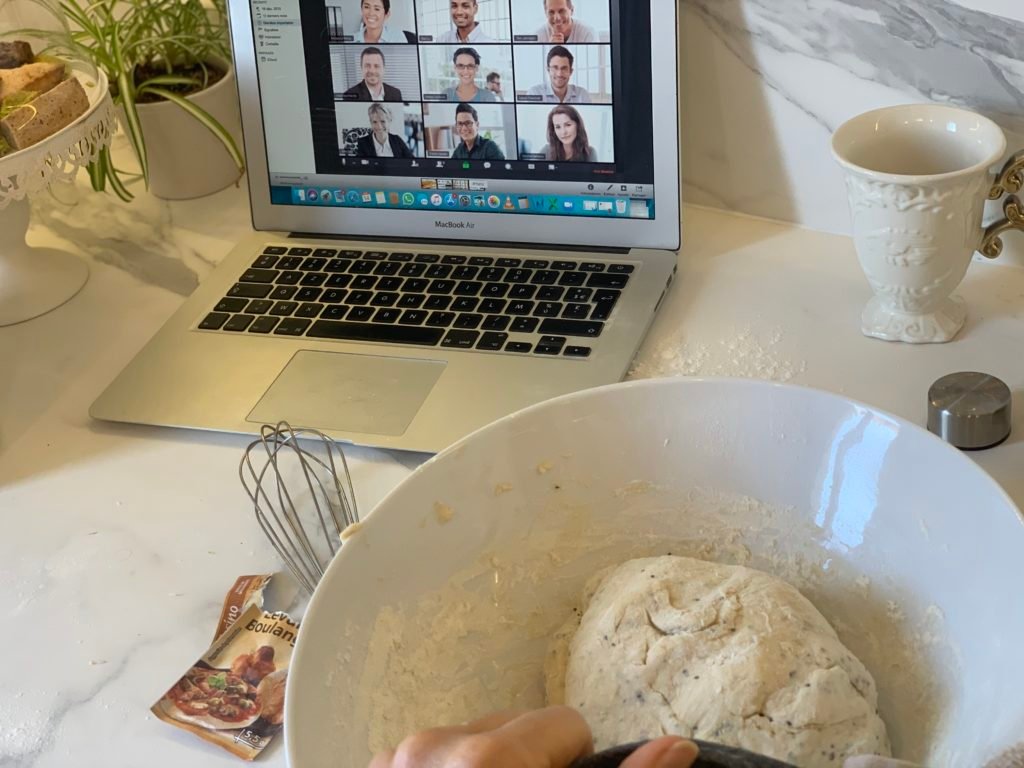HISTORY OF THE BREAD: WHY THE BREAD IS SO IMPORTANT FOR FRENCH PEOPLE.
Emmanuel Macron said he wants to inscribe the baguette de pain ( the french bread) on UNESCO’s intangible world heritage.
He wants following the example of the Neapolitans who managed to classify their famous pizzas a year earlier.
This would sanctify this French speciality, the most emblematic of what was for centuries the basis of the French diet: Bread.

The mytic bread in France
Where does bread come from?
Egypt
The invention of bread is attributed to the Egyptians in 3000 BC.
Indeed in ancient Egypt, we already find the ancestor of our daily bread made of water, flour, salt and leaven.
It is assumed that the invention of bread was an accident. The Egyptians made bread by mixing crushed or ground grain with water from the Nile. This water is rich in silt containing fermentation agents. So it lets leaving this flour and salt water slurry in the air to ferment.
Bread in the Christian Middle Ages
Under the impulse of the Church, bread acquired a central place in the diet of Western Europe, and particularly in France.
In 1305 the french king legislate the profession of the baker. He had forbidden to sell bread that was stale, burnt, too small or devoured by rats.
If the rich were given white wheat bread, the poor were given black bread. They were risking the “burning sickness”, a disease causing degeneration of the limbs caused by rye ergot.
Bread at the heart of the French Revolution
The famines of the Ancien Régime, often caused by a surge in the price of wheat and therefore of bread, regularly provoked riots.
From April to May 1775 France suffered the “Flour War” due to the poor harvests of the previous summers.
Speculators made the price of wheat rise by stocking large quantities in warehouses, bakeries were empty and the people were hungry.
This is when Marie-Antoinette is accused of having uttered this phrase: “If they have no bread, let them eat brioche! ». Anger is growing, we must act. Louis XVI ordered the grain merchants to sell their stocks at a price affordable. He will be given the nickname of “Baker” which will stick to him until the Revolution.
On 1789, a crowd of Parisians gathered heard about a banquet with plenty of food given to the Regiment.
Rumour then has it that the King is holding back stocks of bread at Versailles to starve Paris.
A crowd of mostly women then went towards Versailles shouting “Bread! “and promise to bring back “The Baker, the Bakeress, and the Little Bittersweet” to Paris.
The baguette: a contemporary passion in France
As iconic as the baguette is, its tradition does not go back that long, we agree on the XIXth century. But no one agrees on its origin.
The first version is that the baguette dates back to the Napoleonic era when during the campaigns. The bakers would have decided to change the traditional round shape of the bread and to lengthen. It so that soldiers could carry it more easily in a pocket at the back, and not in their trousers along their leg.
The second version dates the origin back to 1830, which also corresponds to the introduction of Viennese bread in France. This bread was oval or long in shape and made from brewer’s yeast and milk. In 1838, the Austrian August Zang opened his bakery in Paris. He specialised in the production of Viennese rolls – The origin of Viennese pastries.
Zang’s Viennese bakery in 1909.
Then, French bakers decided no longer make round bread, but rather more elongated bread in order to reduce the kneading and baking time.
This decision would have been taken following the introduction of a law forbidding bakers to start before 4am.
There is also a third version dating back to the construction of the subway in Paris. The workers who came from all over France tended to fight in the galleries, especially with the knife they carried with them to cut the bread that was still in the form of round loaves.
The engineer who supervised has asked a baker to make a loaf of bread in elongated shapes that could be broken by hand. This was to thus prevent potentially lethal weapons from descending into the galleries.
Bread is an essential food in the life of the French, during the coronavirus lockdown. The bakeries are always open and people continue to line up to get a fresh baguette.
WHEN FRENCH PEOPLE ARE EATING BREAD
At every meal!!
At breakfast, if the bread is fresh, it is ideal but you can also toast it and enjoy it with butter and jam.
For brunch, lunch and dinner. It is essential to have bread to eat charcuterie and cheese.
Dietitians and nutritionists believe that bread should be eaten for breakfast. That’s the basis, you just have to be careful to put in a little butter but not necessarily jam. But we advise you to eat bread for breakfast.
“Bread is even better than rusks. It has less fat and fewer calories. And the brain and muscles need slow sugars, so carbohydrates for the morning start. So it’s essential to eat bread in the morning.”
According to a survey of the French: A diversity on which the French agree. Indeed, for us, the ideal breakfast should consist of bread slices (86%) with butter (79%) and jam (74%), accompanied by coffee (81%), fruit juice (63%) and milk (57%). Source: UNIJUS / CSA 2014
Contrary to popular belief, the French do not eat croissants or pain au chocolat ( or chocolatine) every morning. Croissants, brioche and pain au chocolat are expensive. They make you fat, so when you buy them, it’s more like Sunday morning. In fact, the French often line up on Sunday mornings to bring fresh croissants and bread for the whole family. Of course, the longer the line, the better the bakery. If you want to buy good bread on Sunday morning, choose a bakery where many people are waiting. You will be sure to find good bread there.

THE STAGES OF BREAD-MAKING
INGREDIENTS :
500 g of flour. (You can take 200 g of white flour, as much wholemeal flour and as much semi-complete flour)
8g of salt
300g of warm water
1 bag of dehydrated baker’s yeast
Kneading
It consists first of all in mixing all the elements that will form the dough. This is the milling process. It is carried out at a slow speed until all traces of water and flour disappear.
In a second step, it is the actual kneading which is done at high speed. This is when the structure of the gluten changes.
At the end of the kneading process, the proteins in the dough form a network capable of expanding while retaining carbon dioxide.

Fermentation
It starts as soon as the yeast comes into contact with the water and flour mixture. After the kneading phase, the baker lets the dough rise (point) once.
The physical properties (viscosity and elasticity) of the dough will change again. After pointing the dough is broken, possibly divided into several dough pieces and then shaped.
The shaped dough pieces continue to ferment in the absence of air.
Just before putting the dough into the oven, the baker gives the dough pieces small strokes with his blade, which will form beautiful ridges, also called “grignes”, on the crust of the bread.
These small strokes of the blade are essential for the bread to develop optimally and evenly.
Without them, the bread would deform and burst under the expansion of carbon dioxide and water vapour.

Baking bread
The last stage of bread making is baking in an oven heated to 240°C.
The crust forms around 90°C while the water vapour is distributed in the crumb and the colouring begins between 110 and 150°C.
When the bread comes out of the oven, sweating begins, during which time the bread will lose 1 or 2% of the water it contains as it cools.

TIPS FOR SUCCESSFUL BREAD MAKING LIKE IN YOU WERE IN FRANCE
- Always add a pinch of sugar to activate the yeast.
- Knead regularly and thoroughly to develop the gluten network.
- Check that the temperature of the room is sufficient for good yeast development (25°C minimum), otherwise place the dough under cover near a radiator.
- To obtain a nice crust, put a container of water in the oven for baking in a humid environment or bake in a steam oven (25%).
- Brush the dough with a brush and hot water to obtain a sticky starchy mixture. The colouring will be more pronounced.

Tips and Tricks for Homemade Baguette
For more beautiful baguettes, you can buy traditional T65 flour from your baker.
Before putting the baguettes in the oven, you can lightly sprinkle the flour with a small sieve for a more “rustic” look.
For even more delicious baguettes, add crushed dried fruit to the recipe.


https://waterfallmagazine.com
I have read so many articles or reviews regarding the blogger
lovers however this paragraph is actually a good article, keep it up.
[…] Now, let’s cook together the french bread, la baguette de pain! […]